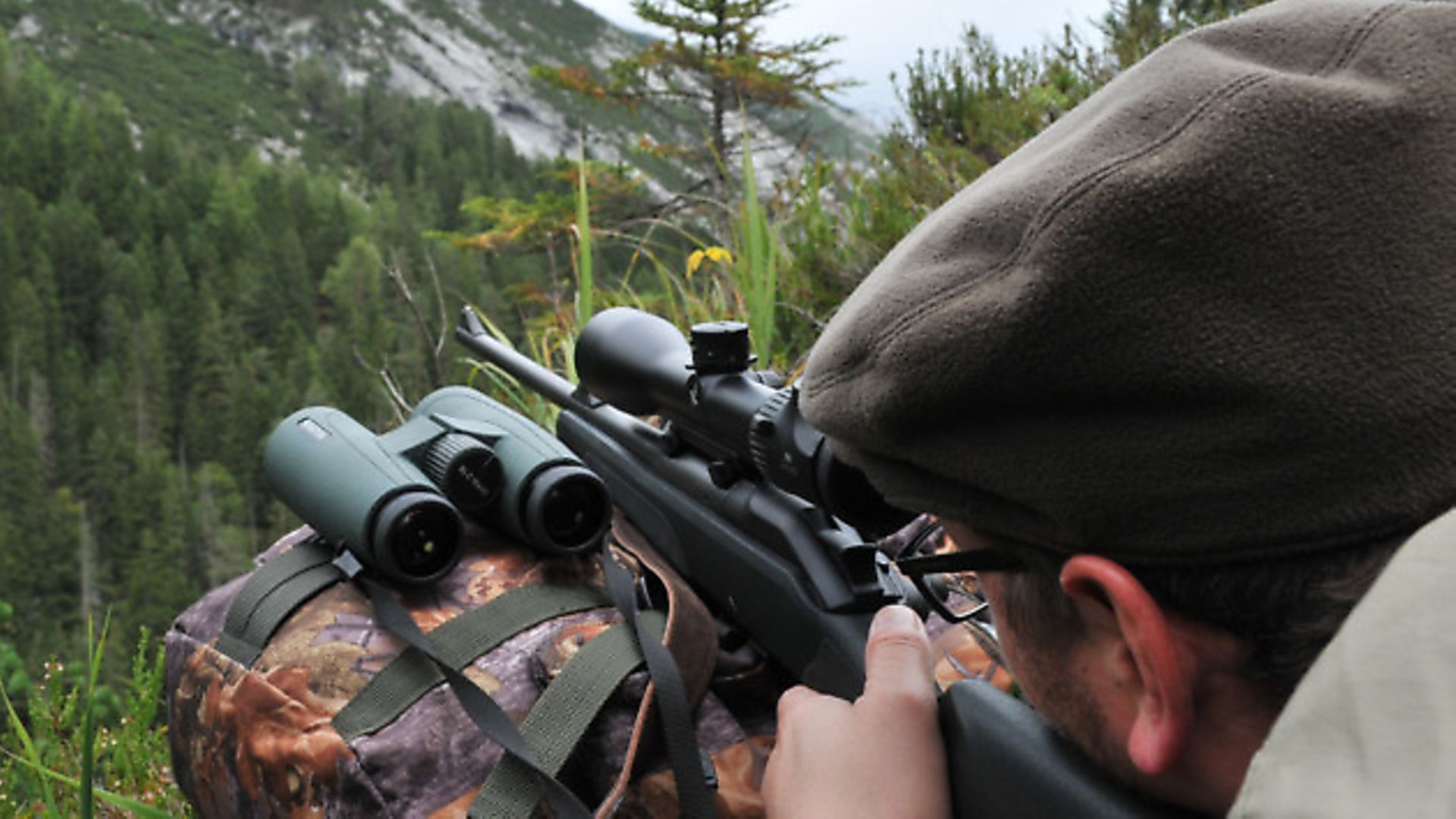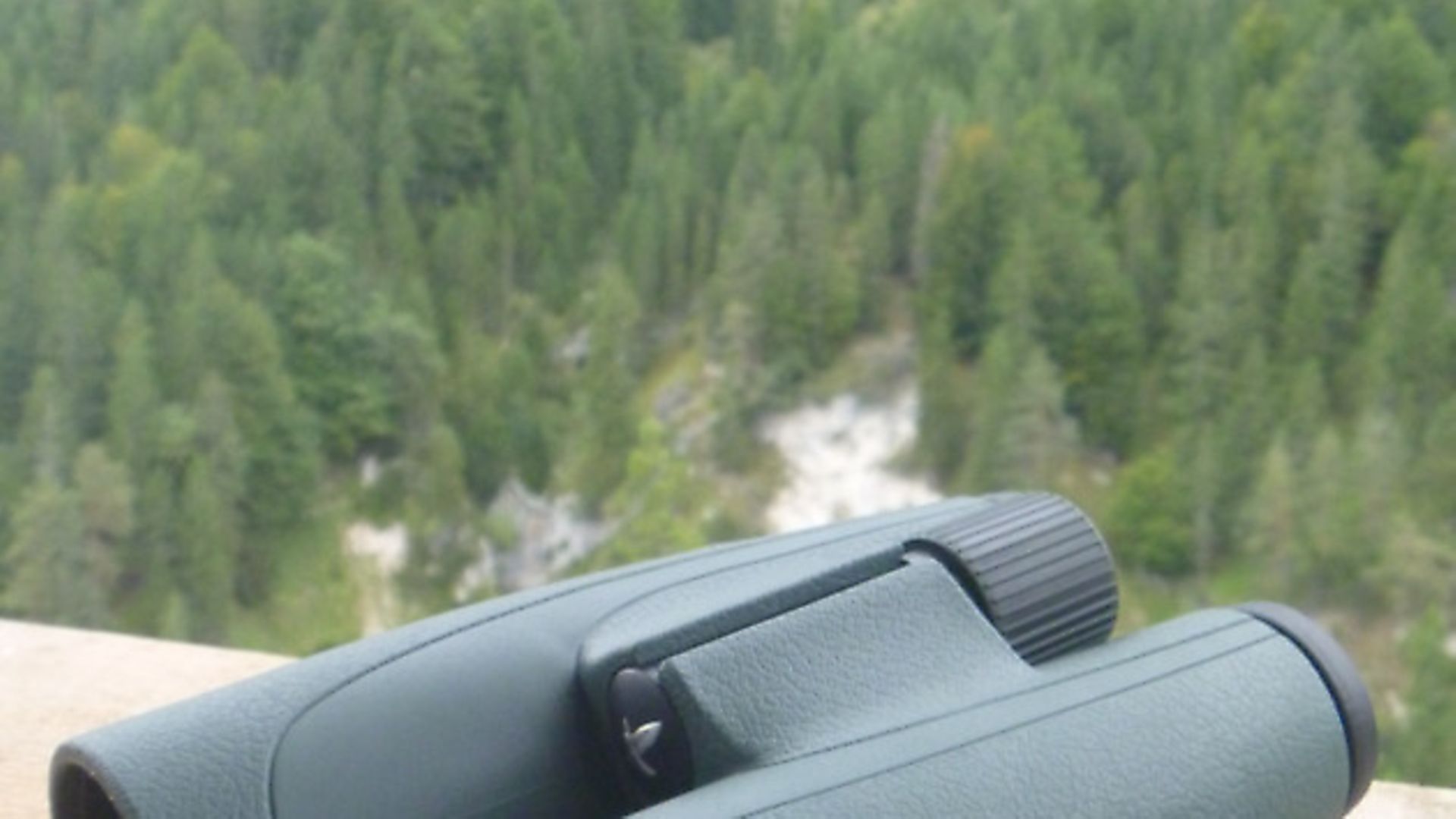ingers of low cloud reach through tattered peaks, curling round to grasp the summit like a great fist. In the distance a rockfall cannonades its echoing way down 4,000 feet from the scree face. And ahead, from the fringes of the forest, red hinds melt into the fading half light of our clearing like wraiths.
 credit: Archant
credit: Archant
Hunting in the Alps is a very special experience. The scale of the landscape affects you. It is nature on a grand scale and wilderness rules here. It’s nice to be reminded of the proper order of things, and if you earn your trophy here it has a real significance. Every hunt in the high mountains is a memory you will cherish forever.
 credit: Archant
credit: Archant
Even the accommodation we are afforded reminds us that we are removed from the modern world. No electricity, no phone signal, just gaslights and candles. This 19th century hunting lodge is slap bang in the middle of the Swarovski family hunting area in Scharnitz, Tyrol.
It is a beautiful location with a far reaching vista down the valley, flanked on both sides by steep tree-lined slopes that extend into rocky shards lost in the clouds.
We are out on the ground within an hour or so of arriving at the hunting lodge and my Alpine hunting experience begins with a leisurely bit of woodland stalking in the hope of getting a roebuck or, perhaps, a red stag.
Altitude is a real issue here – especially for somebody like me who was born and raised below sea level in the Fens. The lowest bit of ground we are hunting is higher than Scafell Pike while the highest peaks are twice as tall as Ben Nevis at over 2,500m.
The medical definition for High Altitude is 1,500-3,500m and Scharnitz is bang in this zone. The effects on somebody like me (carrying some timber and a fair distance from the peak of physical fitness) is that I find myself hyperventilating after even moderate exertion and tougher climbs leave me dizzy with effort as my body struggles to cope with the lack of oxygen.
The guides might not always look in the best of condition but they have blood like treacle and have spent a lifetime climbing these peaks. It would take a couple of weeks to fully acclimatise to this kind of altitude, which is not realistic for most hunters. So anything you can do to increase your fitness – mountain biking, climbing, running – will benefit you to some degree and give you more chance to enjoy your hunt.
We catch just a fleeting glimpse of reds that wind us and bound off into the forest before we can get anything close to a shooting position. We spend half an hour at one high seat overlooking a ravine and spy a couple of hinds and a calf but Josef, my PH, is happy to wait for the chance
of a stag.
We walk and stalk a little more. The tactics are essentially the same as woodland stalking in the UK but with the added advantage of the dog’s scenting ability to aid us.
We hope to bump into a roebuck but we aren’t in luck and eventually make our way to another high seat overlooking the edge of the treeline. The pasture is a draw for the deer and soon an old grizzled hind with a completely white face emerges, soon followed by another younger hind.
The deer continue to come, a mix of youngsters and adults but all with one thing in common. No antlers. We stay until dark and give the all-new SLC 56 binos a thorough workout (see above) but no boys show up and we leave empty-handed.
Our guides greet us in the darkness as we grab coffee, bread and cheese to stave off the morning chill before we drive a few clicks along a gravel track and park up in the lee of a wooden barn. We work our way back to the same highseat we finished on the night before, but as darkness gives way to the soft grey dawn light, it’s clear that no animals are present and after an hour Joesf decides to get mobile instead.
It has been a frustrating morning with not a single animal to be found and this is the last chance saloon. We wend our way along a track that marks the boundary between the heavily wooded slopes below and where scrub bushes give way to the towering rock faces – chamois country.
We spot the highwayman’s mask of a young female and then a calf emerges just above her. A moment later another female – this one with towering horns – grazes out. We watch for a while and move on.
A quarter of a mile later Josef stops suddenly. I follow the line of his gaze and see a young buck. We study it through the binoculars. It is in poor condition – thin and hunched – and with winter here in the high country not far away, Josef
makes the decision that we should try to get
on to it for a shot.
He is not far – about 150 yards – but almost directly above us and it takes a frustrating few minutes to manoeuvre through the scrub and find a suitable rest for the rifle. Shooting at extreme angles is a feature of Alpine hunting and it is worth practising with a dry run or two before you head out for real. It is not always easy and the last thing you want after a hard hunt is to fluff your shot.
The buck knows we are nearby and suddenly decides to make his way towards cover rather briskly. Josef bleats and the buck slows his pace fractionally as he looks over his shoulder for the sound. As he lifts his leg onto a rock I have a decent quartering shot and aiming slightly low to account for the exit on the uphill side, squeeze
off a round.
Calibre-wise we are tooled up for red stags – so the 150gr 300 WSM round is more than a match for a chamois buck that is roughly roe deer sized.
The buck runs 40m, head down, before flopping onto his back and doing us the very decent service of rolling about 50 yards down the hill towards us and lying still.
Carcass extraction is serious business here. A metal-spiked Alpenstock and seriously sturdy boots are a must and even then, finding balance in the loose scree is not easy for a lowlander like myself. There is a real technique and I try to watch Josef as he leans in to the incline, zig-zagging across the slope.
His blood-tracking hound takes a more direct approach. It’s not a question of needing his assistance on this one, but the constant work and the association between the sound of a shot and the end result all help to build the experience and commitment for those tougher trails that aren’t quite so straightforward.
We gralloch the beast and Josef loads it into the roe-sack for our descent. After a few pictures in the morning drizzle we toast our success with the local Schnapps and head back to base for the traditional honouring of the game ceremony.
The hunting attire and the horns are part and parcel of continental hunting. They embody the respect for both the hunters and the quarry and to walk around and admire the animals and talk about the hunts with your fellow sportsman is a really nice touch.
From woodland stalks for roe, to the quiet of the high seat waiting for red stags, to the muscle-wrecking, strength-sapping rigour of a high country chamois stalk, the Austrian Alps offer a vast range of truly mesmerising hunts. And every single one with a backdrop of such majesty, such eye-popping beauty as to etch itself indelibly into your memory.
Banking up and out of Innsbruck airport I feel sad to be leaving the mountains behind. I hope that one day, however, I will be back. n